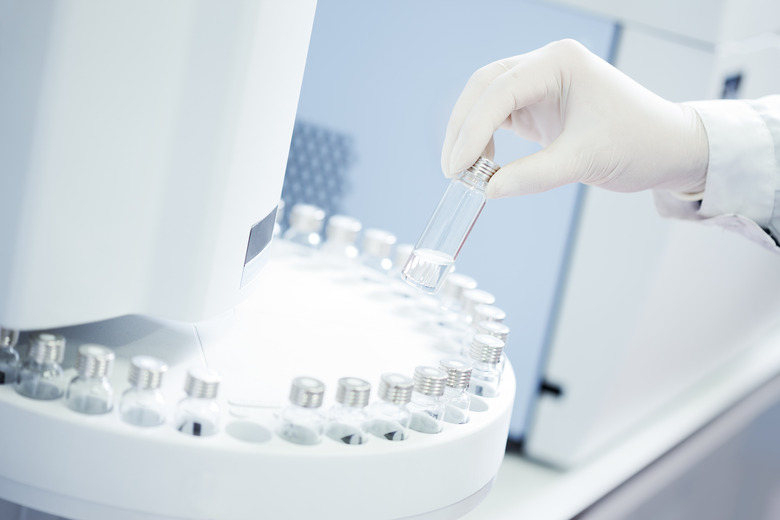Difference Between Spectrometer And Spectrophotometer
Scientists, including astronomers, physicists and chemists, use special tools to evaluate the properties of elements, objects or substances that emit light. For example, each of these produces unique light frequencies and wavelengths that are detected and measured by a spectrometer. Some studies take this a step further and use a spectrophotometer to analyze the intensity of wavelengths and compare them to a standard source.
Spectrometer
Spectrometer
A spectrometer is a tool that scientists use to gather information about a substance based on the visible, ultraviolet or infrared light that it projects, and can be used in different fields of science. For example, astronomers use spectrometers to find the temperature of an object in space, gauge the speed that it is traveling and even estimate the object's weight. Scientists also use spectrometers to determine the composition of items on Earth or in space. This includes the elemental components of items. Scientists in the medical field often use spectrometers to identify contaminants, toxins in the bloodstream or even diseases.
Spectrophotometer
Spectrophotometer
A spectrophotometer is a device that is used to measure the intensity of electromagnetic radiation at various wavelengths. Spectrophotometers are used to measure the absorbency of a certain wavelength of a solution, reflectance of solutions, transmittance or the transparency of solids. In addition, they also measure the diffusivity of the light ranges in electromagnetic radiation spectrum that covers about 200nm to 2500nm with different calibrations and controls. There are two basic classifications of spectrophotometer. The first type is a double-beam spectrophotometer, which compares the intensity of light between one reference light path, and the substance that is being measured. The second type measures the relative light intensity of the beam prior to and after the test sample is introduced.
Differences
Differences
A spectrometer is a part of a spectrophotometer that is most responsible for the measuring of various items. A spectrophotometer is a complete system including a light source, a means to collect the light that has interacted with the tested items and a spectrometer for measurements. There is also a difference in how spectrometers and spectrophotometers are used. To use a spectrometer, turn it on and wait about five minutes for it to heat up. A reference substance is then loaded and calibrated and a spectrum is determined for sample. The wavelengths are then measured and analyzed. The item in question is loaded. Light is passed through the machine and readings are made based on the colors and information that is reflected.
More Differences
More Differences
To use a spectrophotometer, clean out the cuvette in the machine to verify all fingerprints or dirt is removed. The solute (not water) is then added. The spectrophotometer is set to the desired wavelength and the blank cuvette is inserted confirming the arrow is aligned. To calibrate the spectrophotometer, press the "set zero" button or indicator for the wavelength. Introduce the solution to calculate absorbency.
Cite This Article
MLA
Finlay, Crystal. "Difference Between Spectrometer And Spectrophotometer" sciencing.com, https://www.sciencing.com/difference-between-spectrometer-spectrophotometer-8577067/. 13 March 2018.
APA
Finlay, Crystal. (2018, March 13). Difference Between Spectrometer And Spectrophotometer. sciencing.com. Retrieved from https://www.sciencing.com/difference-between-spectrometer-spectrophotometer-8577067/
Chicago
Finlay, Crystal. Difference Between Spectrometer And Spectrophotometer last modified March 24, 2022. https://www.sciencing.com/difference-between-spectrometer-spectrophotometer-8577067/
